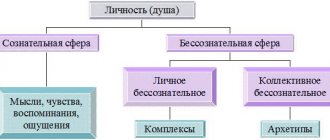The article was prepared by a specialist for informational purposes only. We urge you not to self-medicate. When the first symptoms appear, consult a doctor.
Hysteria refers to complex neuroses and manifests itself in the form of specific emotional and affective states, as well as in the form of somatovegetative clinical manifestations. The disease is characterized by the reversibility of neuropsychic disorders, as well as the absence of obvious pathological and morphological changes in the central nervous system.
At one time, hysteria was considered exclusively a female disease. However, research and analysis of statistics made it possible to establish that men are also susceptible to hysteria. Moreover, there are no fewer male patients with this type of neurosis than women.
Hysteria is a medical diagnosis, not a simulation of a certain condition. The person himself does not realize that he is sick, so the approach to such patients should be as careful as possible. The more skeptical people around you are about a person’s well-being, the stronger the manifestations of pathology will be.
What is hysteria?
Hysteria
(or hysterical neurosis) is a mental disorder that manifests itself in various disorders: functional, autonomic, motor, affective and sensitive.
A person suffering from hysteria seeks to attract attention, which is one of the symptoms of the disease. Although the patient often experiences disturbances in the functioning of the body in general and the nervous system in particular. Thus, pathological manifestations of the brain can be expressed in the development of blindness, paralysis, etc.
Hysteria is a polyetiological disease. The conditions in which personality is formed can provoke its development.
Treatment must be comprehensive. Strengthening the immune system and nervous system is required. It is equally important to direct efforts to eliminate the manifestations of the disease.
In modern medical practice, the term hysteria is not used. There is no such concept either in the international classification of diseases or in DSM-VI.
This pathology is designated by the following names:
- Anxious hysteria.
- Conversion or dissociative disorders.
- Histrionic personality disorder.
- Somatoform disorders.
Medicine views hysteria as a personality disorder, which is characterized by superficial judgments, increased self-hypnosis, the desire to attract attention, a tendency to fantasies, mental lability, and theatrical behavior.
Symptoms
The symptoms of hysteria are quite ambiguous. In other words, the patient can subconsciously feign a particular illness. The most common symptoms of hysteria include the following:
- hysterical fits;
- sensitivity disorder;
- speech disorders;
- spasms in the throat - the patient has difficulty swallowing;
- paralysis;
- movement disorders;
- disturbance in the functioning of internal organs;
- mental disorders;
- hysterical laughter.
Causes of hysterical neurosis
External and internal factors can provoke the development of hysteria. Also important are the characteristics of the emotional sphere of a particular person, the characteristics of his personality and suggestibility, which affects the course of the patient’s thoughts and his emotional state.
Internal personality conflict can cause hysteria. Often the impetus for the development of the disease is stress, in which a person is forced to restrain his own emotions. He suppresses them and does not show negative experiences.
Society, in itself, develops hysteria within every person. People who are emotionally weak are unable to suppress negative emotions for a long time. One day they will come out, which will be expressed in inappropriate behavior.
Risk factors that can lead to the development of hysteria:
- Somatic diseases.
- Physical and psychological trauma.
- Taking sleeping pills and tranquilizers without medical supervision.
- Alcoholism and drug addiction.
Hysterical neurosis is a frequent companion of people who grew up in dysfunctional families. The disease can also develop in people who are in unusual circumstances. We must not forget about such individual personality characteristics as the character and psychotype of a person.
Psychologists have identified reasons that can lead to the development of hysteria:
- Mental immaturity.
The modern individual is becoming younger not only in body (the desire to remain young as long as possible), but also in soul (infancy persists longer than in past years or even centuries). Many children grow up to be suggestible and impressionable. They have reduced independence, and many of them are selfish. Such mental disorders are a consequence of the characteristics of upbringing, as well as the goals that are set for a person. From childhood they are set up to be successful, which is not always possible in real life.
- Emotional turmoil.
Conflict situations, difficulties, and everyday problems have a negative impact on mental health. A person encounters them every day. People with a strong psyche calmly overcome all stress, but an emotionally weak person breaks down. As a result, he develops hysteria.
Russia
There have been rumors about demoniacs since the 11th century. In the 17th-19th centuries in Russia, hysterical women were called cliques. Traditionally, it was believed that in their fits they shouted out the name of the one who cast the spell on them. Therefore, those who were called klikushi were brought to trial in the 17th century, they were accused of witchcraft, tortured, and the klikush were punished by reprimanding. At the beginning of the 18th century, it became clear to Peter the Great that cliques often pursue the goal of slandering the innocent, so they began to be brought to justice. Fake demonization was a common occurrence in those days.
Symptoms of hysteria
The symptoms of hysteria are most intense when a person is surrounded by other people. His behavior becomes demonstrative. Hysteria develops unexpectedly and ends just as suddenly.
Its main symptoms:
- Movement disorders:
- The patient's coordination will be impaired.
- The hands are shaky.
- The voice may disappear.
- Muscle tics and cramps are often observed.
- Somatic symptoms.
There are certain features of hysterical neurosis that distinguish it from somatic diseases. Thus, aphonia is characterized by the absence of a voice, but a person coughs with sound. This is explained by the fact that during hysterical paralysis, muscle tissue does not atrophy. Trying to attract attention, patients often feign fainting, breathing difficulties, and may wring their hands or rush about. However, when it is possible to distract them, the severity of these symptoms becomes much less intense.
- Sensory impairments.
Sensory disturbances are expressed by increased, decreased, or complete absence of sensitivity. The patient himself can indicate which part of his body is numb. Also, patients with hysteria often experience pain in various places. Many patients indicate that during hysterics they go blind or deaf. On the part of the eyes, disturbances such as a decrease in the visual field and distortion of color perception may be observed. At the same time, a person is normally oriented in space. Deafness is often accompanied by impaired sensitivity of the skin of the ears.
- Vegetative symptoms.
The symptoms that appear during hysteria from the autonomic system are diverse.
These include:
- Nausea and vomiting.
- Deterioration of breathing.
- Pain in the heart and other organs.
- False spasm of the esophagus due to which a person refuses to eat.
- Headache.
- Dizziness.
- Itching.
Theatrical seizures are another symptom of hysteria. They are aimed at attracting attention and achieving the demands put forward. The patient can bend and fall to the floor, while the falls are quite “correct” and as safe as possible. Often people begin to bang their heads against hard objects, wave their arms and legs, cry or laugh loudly. With all his appearance, a person indicates that he is suffering incredibly. If you check the reaction of the pupils, it will be intact, the patient himself is conscious. The face may be red or pale.
You can stop a seizure with a firm slap in the face. Alternatively, the person can be doused with cold water. All of these signs make it possible to distinguish hysteria from an epileptic attack.
Test for hysteria
To determine whether you should consider having a problem, we suggest taking psychological testing. Check the statements with which you agree:
1) You tend to dramatize, exaggerate emotions, and theatrically talk about the events that happened.
2) You are suggestible, that is, you are easily influenced by other people or circumstances.
3) Your emotions are shallow, they often change very quickly. You can cry, and a minute later you can laugh.
4) You strive for actions and situations that will allow you to attract attention to yourself.
5) You are characterized by excessive seductiveness. This applies to appearance and behavior.
6) You are very concerned about your attractiveness.
If at least 4 out of 6 signs are typical for you or your loved ones, then you should pay special attention to this problem and undergo a more detailed diagnosis.
Clinical forms of hysteria
Depending on what type of disorder prevails, the forms of hysteria can be as follows:
- Hysterical paralysis. A person's muscles become weak, and the arms and legs are the first to suffer. As a result, he cannot move them normally.
- Hysterical disturbances of sensitivity. This may include pain and numbness of the skin in various parts of the body.
- Hysterical astasia-abasia, that is, gait disturbances. The patient cannot walk, and when trying to rise to his feet, he sways violently in different directions.
- Hysterical blindness. The patient loses the ability to see with one or both eyes.
- Hysterical deafness. Hearing is absent in both ears, but sometimes it is reduced in only one ear.
- Hysterical convulsive attacks. This form of hysteria is characterized by the appearance of uncontrolled movements of the limbs. At this time, the person may lose consciousness.
- Hysterical mutism. The patient cannot speak, but at the same time points to his lips, indicating that speech is impossible.
- Hysterical amnesia. A person may lose their memory for a short period of time.
- Hysterical coma. The patient loses consciousness. He does not react to everything that happens around him, does not speak, does not open his eyes, does not respond to his name, does not feel pain. Coma can last from a few minutes to several days.
Such a unique medical phenomenon as mass hysteria deserves special attention. It proceeds like a mental epidemic. Scientists explain this phenomenon by the increased suggestibility of many people. Mass psychosis rarely occurs. In this case, a violation of the perception of the world develops in several people at once. Mass hysteria is used as evidence that people are subject to the herd instinct.
Which doctor should I see for hysteria?
The diagnosis and treatment of hysteria is carried out by specialists such as neurologists and psychiatrists.
Video: detailed description of hysterical neurosis. The causes and methods of treatment are considered. Hysteria as a way to attract attention in order to get what you want:
Hysteria is dangerous because it is often confused with character traits. For a long time, patients believe that the reason for their inappropriate behavior is simple overwork. In fact, changes in the psyche should not be ignored. Moreover, hysteria can lead to deafness and blindness. The disease requires identification and treatment.
During the appointment, the doctor will examine the patient and conduct a series of neurological tests on him. A psychiatrist assesses a person's psychological status. To assess a person’s health status, it will be necessary to conduct electroneuromyography, EEG, MRI, CT. The doctor must decide which diagnostic test is required for a particular patient.
Stronger sex
A hysterical man—it doesn’t even sound human. There are typical female ailments, for example, anorexia. Likewise, women are mostly susceptible to hysteria.
Doctors and psychologists believe that hysteria in men can manifest itself as abdominal pain, which symbolizes the desire for pregnancy. According to the dictionary of psychoanalysis, a man with hysterics declares himself as a subject belonging to the female clan and making attempts to realize his virility through seduction, and the world must accept him as unique. With his behavior, this man makes a woman beg for a date with him as a gift from God, and a night with him is the highest reward on a planetary scale. A hysterical husband is an unbearable person.
Treatment of hysteria
Hysteria is characterized by prolonged development. Many patients adapt to its manifestations. They indicate that they are simply shocking individuals and society accepts them. Other people are not able to put up with mental changes, since hysterical attacks lead to problems in relationships both with loved ones and with work colleagues. These people need help.
First aid for a hysterical attack
In order for a person to have an attack of hysteria, a traumatic effect must be exerted on his psyche. Most often it is quite long.
Since an attack often follows the type of epilepsy, you need to be able to provide first aid to patients:
- People who surround a person having a seizure should themselves remain as calm as possible. The more emotionally they react to the patient’s hysteria, the longer the attack will last. You should act as if nothing strange is happening. If the patient feels attention, he will strive to attract it even more.
- If there is such a possibility, then the person should be taken to a separate room and put to bed.
- Items that could cause injury must be removed.
- The fewer strangers there are around, the better. If they begin to express sympathy out loud, the attack will become more and more severe.
- You can bring cotton wool soaked in ammonia to the patient’s nose.
- You should not get too close to a person having a seizure. The attack will pass if the patient understands that with its help he cannot achieve the desired effect.
A person should not be left alone, as during an attack he may attempt to demonstrate suicide. It may be dangerous.
Psychotherapy
Psychotherapy allows you to get rid of hysteria. Treatment fails only when patients use their illness to gain some benefit. For example, so that he receives attention with or without reason.
- Psychoanalysis.
This is a method of providing a complex influence on the patient. With its help, you can not only get rid of hysteria, but also identify the causes of the development of this disorder. If you understand why a person has hysteria, you can choose the best ways to influence him. To do this, you will need to “dig” into childhood memories and other age periods of the patient’s life. A competent psychoanalyst will be able to connect the events of a past life with what is happening to a person today.
- Group and family psychotherapy.
These methods allow the patient to evaluate himself from the outside. If he learns to empathize with other people and receives positive emotions from this, then his problem will be resolved. Psychodrama is one of the methods of psychotherapy. The patient is asked to take on the role and experiences of another person. At the same time, a conflict situation plays out. Family psychotherapy allows you to get rid of interpersonal conflicts within the family. Relationships between adults and adults, adults and children are explored.
- Cognitively-behavioral psychotherapy.
This is one of the most effective methods of treating hysteria. The doctor tells the patient how to get out of problematic situations in order to get the most positive result. All techniques are worked out in practice. A person is given certain limits within which he must realize his needs.
Drug therapy
If the patient has severe symptoms of depression, he is prescribed medications. When hysteria and depression are combined, the use of MAO inhibitors, tetracyclic and tricyclic antidepressants is indicated. Provided that the therapy has the desired effect, the drugs are gradually withdrawn. During the period of recovery from depression, the patient must be monitored, since at this time thoughts of suicide may still haunt him.
Drugs that can be used in the treatment regimen:
- Sedative phytomedicines.
- Sleeping pills. They are prescribed when the patient is plagued by insomnia.
- General strengthening agents.
Types of hysterics.
Everyday.
Associated with everyday problems of “nothing to wear” or “I’m bored.” The most monosyllabic, predictable state, and with the correct reaction - short-term and safe.
Stormy.
It’s always a loud complaint: “you stole my best years” or “why don’t I still have a fur coat.” This behavior is explained by the desire to spur an unprincipled, uninitiated, weak-willed partner to take decisive action. And sometimes it really helps to receive a gift without long months of waiting.
Self-affirming.
The woman proudly declares “yes, I’m hysterical,” but implies “I’m a goddess.” He does this not only to test his partner’s patience, but to increase his own importance. So she claims that she does not agree to just sympathy, but deserves great love.
Silent.
The most unpredictable and dangerous. A muffled voice and an insinuating tone do not bode well. After all, it is precisely at such moments that a car is painted, men’s clothes are cut, and sometimes a frying pan flies at your head. If a partner values the relationship, such conditions cannot be ignored under any circumstances.
Physiological.
Often the trigger for female hysteria is chronic fatigue, malnutrition (including during weight loss), and lack of time for oneself. In such cases, a woman needs moral and physical help, as well as free time that she can devote to herself.
Vengeful.
This state is described by the words “nothing happened, everything is fine.” But women's behavior says the opposite - everything is bad. It manifests itself as quiet sobs, uncontrollable moaning or a demonstration of one’s helplessness. In this state, a woman is able to have a lover, cast a love spell from a psychic, or hire a detective to spy on her. It is better for a man to be “on alert” and contact a family psychotherapist.
Sexy.
It is not for nothing that Freud saw the root causes of female hysteria in sexual dissatisfaction. It breaks out in the form of bodily symptoms and inappropriately strong emotional reactions. The best way out for a man is to transfer unspent female energy into the family channel, so that the woman does not look for release on the side.
Take the Freud test
Forecast
As a rule, with a professional approach, hysteria can be easily corrected. If a person lives in favorable conditions, everything is normal in his personal life and work, then coping with the disease is not difficult.
Although in some cases certain elements of demonstrative behavior may remain. As a person grows older, he becomes more serious and wiser. Thanks to the help of a psychotherapist, he learns to use his character traits for his own benefit.
A less optimistic prognosis for those patients who suffer from autonomic disorders provoked by hysteria. Decompensation in such patients occurs in old age.
If the patient is prone to pathological fantasizing, then treatment becomes more complicated. All of these people are chronic liars. Moreover, they deceive without any specific purpose; their lies make no sense. The progression of the disease can lead to the fact that a person begins to denigrate himself. For example, he may confess to a crime he did not commit. If such a patient is not treated, there is a possibility that the personality will deteriorate.
Psychologists
Hysterical individuals are excellent psychologists who know where and when to apply pressure, where the interlocutor’s pain points and weaknesses are. They are able to portray arrogance and defenselessness, incredible stubbornness and impeccable submission.
Types of hysteria:
- Passive: the lady withdraws into herself and does everything under pressure, making it clear that if she does something, it is to make things even worse.
- Active - a hysterical wife, destroying everything she sees, breaking dishes, throwing away things that are dear to you, raising her hand against herself or those around her.
And it is not clear which of them is worse. It is possible to establish contact with such ladies by promising to make concessions. But if you give in once, if you adhere to this style, you can become his hostage. The hysterical lady plays for the audience, and as long as there is someone to “enjoy” this performance, her play goes off with a bang. The meaning is lost only when there is no one to react to her performances.
A hysterical person is an innate personality type, but you can play on the weaknesses of such ladies - it will even be interesting in bed. Such women carry their own negativity even in intimacy. They blame the man for his imaginary frigidity or inability to achieve orgasm.










